#“Night on Bald Mountain/Ave Maria”
Text
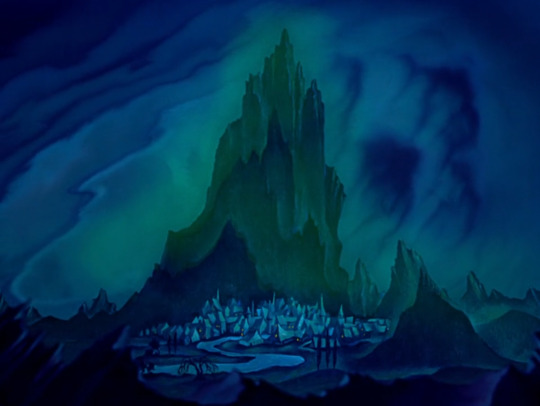

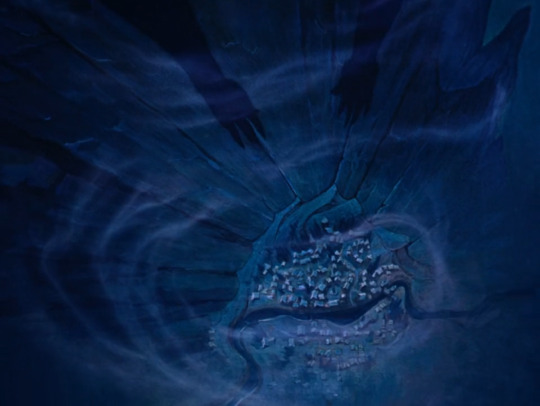

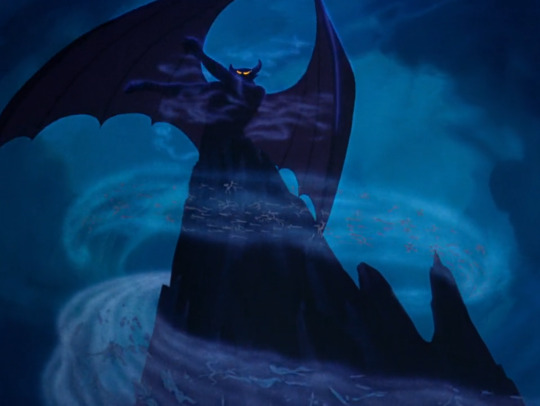
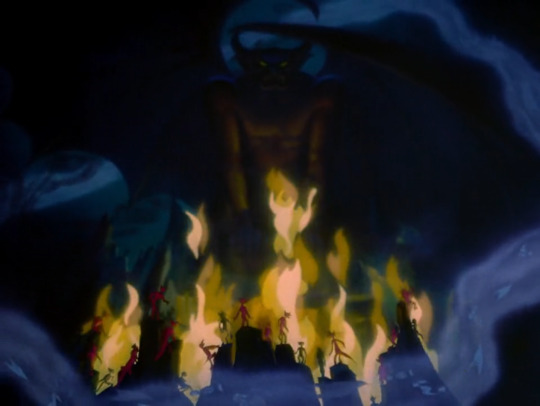

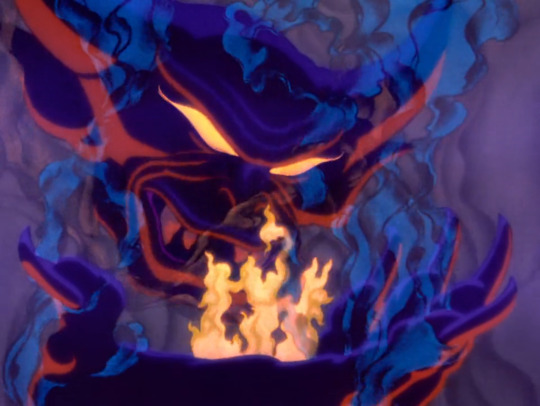

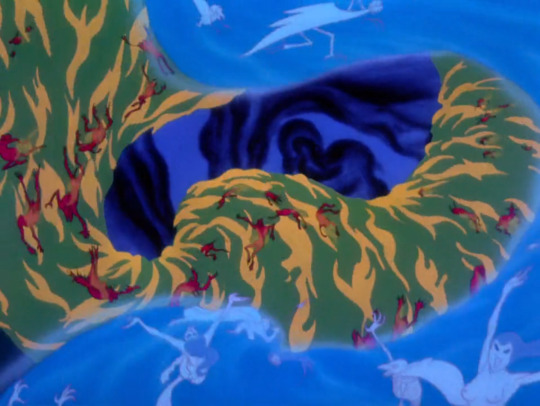
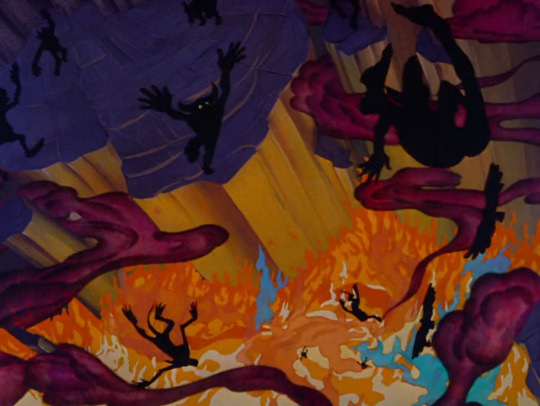

Fantasia - "Night on Bald Mountain/Ave Maria" (1940) dir. Wilfred Jackson
My Ko-Fi
#Fantasia (1940)#Fantasia#“Night on Bald Mountain/Ave Maria” (1940)#“Night on Bald Mountain/Ave Maria”#Wilfred Jackson#American#occult#animated horror#my screenshots
123 notes
·
View notes
Text
#disney#fantasia#polls#disney polls#the sorcerer's apprentice#the nutcracker suite#rite of spring#night on bald mountain#ave Maria#the pastoral Symphony#dance of the hours#toccata and fugue in d minor#bach#tchaikovsky#paul dukas#stravinsky#beethoven#amilcare ponchielli#modest mussorgsky#schubert#chernabog#sorcerer mickey#the nutcracker#yen sid
26 notes
·
View notes
Text
Why is Night On Bald Mountain with Ave Maria right after just so good 💕
0 notes
Text




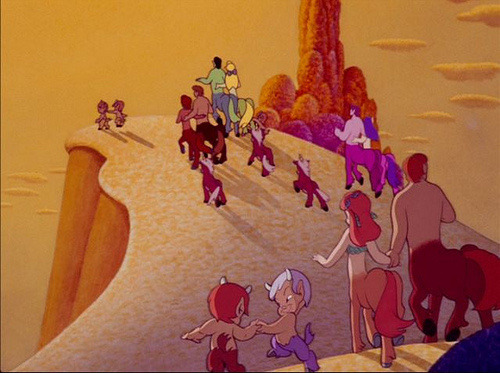


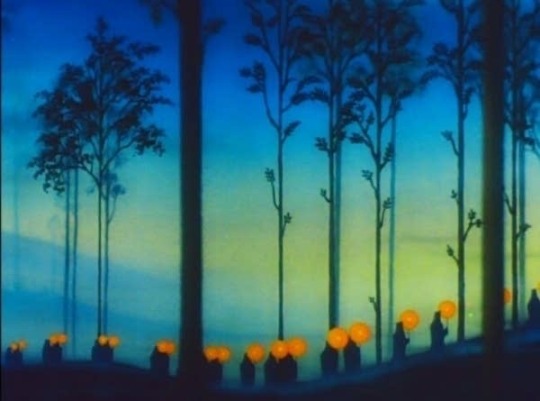
#no wrong answers#will do Fantasia 200 next#fantasia#polls#movie poll#disney polls#disney animation#disney animated movies#disney animated films
33 notes
·
View notes
Text
Going off of one of my previous reblogs, i attempted to make a list of where in the world every Disney Animated Canon movie takes place
Antarctica:
Pablo the Cold-Blooded Penguin (The Three Caballeros) (Pablo starts out living in the South Pole and then he goes to Chile, Peru, and Ecuador)
Africa
The Lion King
Tarzan
Asia
Aladdin is set in a mishmash of Middle Eastern countries. It was supposed to be in Iraq, but because of the Persian Gulf War, Disney said no, so it takes place in the fictional country of Agrabah, which is inspired by Baghdad in Iraq.
Raya and the Last Dragon is set in a mishmash of Southeast Asian countries, but takes the most inspiration from Vietnam
China: Mulan
India: The Jungle Book
Europe
England: The Wind in the Willows (The Adventures of Ichabod and Mr. Toad), Alice in Wonderland, Peter Pan, 101 Dalmatians, The Sword in the Stone, Robin Hood, Winnie the Pooh, The Great Mouse Detective
France: Cinderella, Sleeping Beauty, The Aristocats, Beauty and the Beast, The Hunchback of Notre Dame
Germany: Snow White, Tangled
Greece: The Pastoral Symphony (Fantasia), Hercules
Italy: Pinocchio
Norway: Frozen (Arendelle is heavily inspired by Norway)
Russia: Peter and the Wolf (Make Mine Music)
Spain: Wish (Rosas is inspired by Spain and located off the Iberian Peninsula)
Turkey: Pomp and Circumstance (Fantasia 2000) is about Noah's Ark, and many people believe that the ark landed at Mount Ararat in present-day Turkey
Ukraine: Night on Bald Mountain/Ave Maria (Fantasia) (the real Bald Mountain is Mount Triglaf, near Kyiv in Ukraine)
Wales: The Black Cauldron
North America
Mexico:
Las Posadas
Mexico: Pátzcuaro, Veracruz and Acapulco
You Belong to My Heart/Donald's Surreal Reverie (all from The Three Caballeros)
United States:
Different towns in Massachusetts and California have claimed to be the Mudville that Casey at the Bat (Make Mine Music) takes place in, but the author of the original poem said it has no basis in fact.
The Legend of Johnny Appleseed (Melody Time) - the real Johnny Appleseed (real name John Chapman) planted apple trees in Pennsylvania, Ohio, Indiana, Illinois, Ontario, and West Virginia
Lady and the Tramp could take place somewhere in New England
The Fox and the Hound looks like it takes place in Appalachia, so maybe Pennsylvania or Virginia
Home on the Range is somewhere in the Old West
Bolt takes place across America: starts out in California, the title character ends up in New York, visits Ohio, and is back to California by the end
Alaska: Brother Bear
California: Wreck it Ralph (Ralph Breaks the Internet reveals that Litwak's Arcade is in California), Big Hero 6
Florida: Dumbo
Hawaii: Lilo and Stitch
Louisiana: Blue Bayou (Make Mine Music), most of The Rescuers, The Princess and the Frog
Maine: Bambi (the forest was based on Maine and the animators traveled to Maine for reference)
New York: Johnny Fedora and Alice Blue Bonnet, The Whale Who Wanted to Sing at the Met (Make Mine Music) (the Metropolitan Opera is in NYC), Little Toot (Melody Time), The Legend of Sleepy Hollow (The Adventures of Ichabod and Mr. Toad) (the real Sleepy Hollow is in New York), The Rescuers (the Rescue Aid Society headquarters is in NYC), Oliver and Company, Rhapsody in Blue (Fantasia 2000)
Texas: Pecos Bill (Melody Time)
Virginia: Pocahontas
Washington, DC: Atlantis: The Lost Empire (Milo works at the Smithsonian
Oceania
The Rescuers Down Under: Australia
Moana: Polynesia
Pangaea
The Rite of Spring (Fantasia)
Dinosaur
South America
Argentina: Pedro, El Gaucho Goofy (Saludos Amigos)
Bolivia: Lake Titicaca (Saludos Amigos)
Brazil: Aquarela do Brasil (Saludos Amigos), Baia (The Three Caballeros), Blame It on the Samba (Melody Time),
Chile: Pedro (Saludos Amigos) (The title character delivers the mail in the Andes, between Santiago, Chile, and Mendoza, Argentina), Pablo the Cold-Blooded Penguin (The Three Caballeros)
Colombia: Encanto
Ecuador: Pablo the Cold-Blooded Penguin (The Three Caballeros) (Pablo goes to the Galapagos Islands, which is an archipelago in Ecuador)
Peru: Lake Titicaca (Saludos Amigos) (the lake is at the border between Peru and Bolivia), Pablo the Cold-Blooded Penguin (The Three Caballeros), The Emperor's New Groove
Uruguay: The Flying Gauchito (The Three Caballeros)
Unknown/does not take place in our world
Any of the package film segments not mentioned here
The Little Mermaid seems like it takes place in the Mediterranean Sea, but it could also take place in the Caribbean, which would explain Sebastian's accent
Fantasia 2000: "Pines of Rome" is set in the Arctic, so it could be anywhere from Canada to Alaska to Finland to Russia
Most of Atlantis: the Lost Empire, since the city of Atlantis is completely made up
Treasure Planet
Chicken Little
Meet the Robinsons
Zootopia
Strange World
#disney#snow white and the seven dwarfs#pinocchio#fantasia#dumbo#bambi#saludos amigos#the three caballeros#make mine music#melody time#the adventures of ichabod and mr. toad#cinderella#alice in wonderland#peter pan#lady and the tramp#sleeping beauty#101 dalmatians#the sword in the stone#the jungle book#the aristocats#robin hood#winnie the pooh#the rescuers#the fox and the hound#the black cauldron#the great mouse detective#oliver and company#the little mermaid#beauty and the beast#aladdin
36 notes
·
View notes
Text
Anonymous asked: What’s your favourite piece of classical music that you discovered through a film soundtrack?
What an interesting question to which I have had to really scratch my head and think a little. The main issue is that if you are, like me, one of those kids who was exposed to classical music and some of its canon from an early age then the question becomes harder to answer. Like many other children, I was taught to play musical instruments and have music lessons from about 6 years old onwards. Films, especially the more adult themed ones with a classical score, were something you discovered much later in your teens onwards. So I’m going to cheat a bit here and there. For example I can’t include Milos Forman’s classic movie ‘Amadeus’ because I was already familiar with a range of Mozart’s repertoire before watching it.
Predictably, I’m going have to start with Walt Disney’s classic film ‘Fantasia’ (1940). This was perhaps the first film I was truly exposed to classical music in all its glory. It was Disney’s love letter to classical music and I can still watch it with child-like wonder at the magnificent music set to an incredible animation.
I’m pretty sure that Igor Stravinsky almost certainly wasn't thinking of dinosaurs when he wrote his ballet The Rite of Spring. But Walt Disney and his talented team of animators decided to tell the story of these prehistoric creatures using the dramatic, angular sounds of Stravinsky's masterpiece. And it's become one of the most famous sequences of the 1940s film.
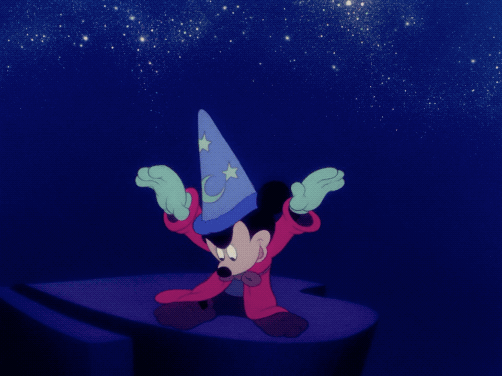
The score was performed by the Philadelphia Orchestra under Leopold Stokowski and was narrated by composer Deems Taylor was awesome. As magnificent was the music that Toccata and Fugue in D minor by J. S. Bach, selections from The Nutcracker Suite by Pyotr Ilyich Tchaikowsky, The Sorcerer’s Apprentice by Paul Dukas, Pastoral Symphony (Symphony No. 6) by Ludwig van Beethoven, and the “Dance of the Hours” by Amilcare Ponchielli, it was the last two pieces that left a real impression. Of course I’m talking about Night On Bald Mountain by Modest Moussorgsky, coupled with ‘Ave Maria’ by Franz Schubert.

I’m also going to add Léo Delibes’ Flower Duet (from the opera Lakmé). I used to hear this ad nauseam but not in a movie. This classic piece was the chosen soundtrack for the British Airways advertisement on television and in their departure lounges and flights. The ad - updated often - has been around in one form or another but with the same soundtrack since the 1980s. It was a huge feature of my childhood in the 90s. Whenever I boarded a flight in the Far East or South Asia or the Middle East to fly back home to Britain - because we lived overseas - you would hear this as you strapped yourself in to your seats.
As for my main list (in no particular order):
youtube
Second movement of Beethoven's Symphony No.7 from: The King’s Speech (2010)
The climactic scene where King George VI has to make his speech ‘unto the nations’ was made more powerful by this piece. Like King George VI and his personal battles with his voice, much speculation has taken place over what personal agony the musical piece reflects in Beethoven’s life, especially since sketches for the movement predate the symphony by several years.
One clue is that Beethoven, who conducted the premier in December of 1813 for the veterans of the Battle of Hanau, made an address to these veterans, saying: "We are moved by nothing but pure patriotism and the joyful sacrifice of our powers for those who have sacrificed so much for us." There is every reason to believe that the deep emotion of this movement was founded on anything but what he said it was. His sentiment had existed long before 1813, as had the wars. Napoleon was being repelled, and the symphony is overall joyous.
However, Beethoven was not the kind of man to casually dismiss sacrifice, and the concert was dedicated to veterans. I believe that this movement celebrates those military veterans who made sacrifices for their nation, in much the same way King George VI was asking his subjects in Britain and the Commonwealth in the fight against evil menace of Nazism and Fascism.
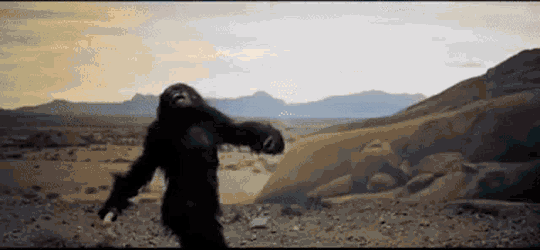
Ligeti's Lux Aeterna and Requiem from: 2001: A Space Odyssey (1968)
I hated it. I saw it as a teen and I thought something was wrong with the audio. I still hate the piece but at least I know who Ligeti is. It was way too avant garde for me back then and it remains so today. I think scratching your nails down a chalk board has more melody than a piece by Ligeti. Kubrick clearly loved his work and used it in his other films such as The Shining and Eyes Wide Shut.
Richard Strauss - Also Sprach Zarathustra from 2001: Space Odyssey (1968)
By contrast I loved it. Music can be the difference between a highly memorable scene and one that leaves viewers with an indifferent shrug. It’s hard to believe that this classical piece was used in the main opening scene of the film originally as a temporary place holder by Kubrick whilst he waited for the film composer, Alex North, from the full soundtrack. In the end Kubrick left Strauss in and it made all the difference.
youtube
Franz Schubert’s Piano Trio in E-Flat from: Barry Lyndon (1975)
The Piano Trio No. 2 in E-flat major for piano, violin, and cello, D. 929, was one of the last compositions completed by Franz Schubert in 1827 and one of the last pieces he heard being performed before he died. The track itself has been used in countless of movies over the decades such as The Hunger, Crimson Tide, The Piano Teacher, L'Homme de sa vie, Land of the Blind, Recollections of the Yellow House, The Way He Looks, The Mechanic, Miss Julie, The Congress, and the HBO miniseries John Adams. But I first heard it on Kubrick’s film Barry Lyndon and remember being captivated by the film and the music. I was a teen watching it my parents and the whole scene at the card table was beautifully directed and wonderfully lit. As I learned much later in life, Kubrick and his team invented new kind of film lens to be able to film in candlelight.
Handel's sarabande from: Barry Lyndon (1975)
The sarabande is traditionally the music written for a courtly dance in triple metre. Handel's version was composed for solo harpsichord at some point between 1703 and 1706 and first published in 1733. This classic piece is the 4th movement of the Cette pièce est le quatrième mouvement de la Suite in G minor composed for the harpsichord. Although the Sarabande was originally intended by its composer to be played solo on harpsichord, the orchestral version of the Sarabande is very well known these days thanks to the Barry Lyndon film. Moreover, the Sarabande is beloved by filmmakers and has been adapted several times for various films. It’s one of my favourite pieces and it reminds me of the English countryside for some reason rather than some formal court dance.
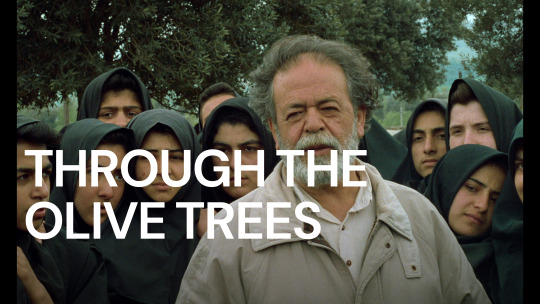
Domenico Cimarosa’s Concerto for Oboe in C Moll from: Though the Olive Trees (1994)
Directed by Abbas Kiarostami, this little known Iranian-French film was something I stumbled upon through my Norwegian mother who loved these kind of independent films when we lived in South Asia as an antidote to all the Bollywood films we children enjoyed. Kiarostami’s film traces the trouble arising when the romantic misfortune of one of the actors on a film set - a young man who pines for the woman cast as his wife, even though, in real life, she will have nothing to do with him - leaves the director caught in the middle. In hindsight I can now say it was a metafictional masterpiece. Kiarostami contemplates cinema and its romantic fallacies. The film is gorgeously grounded in Northern Iran’s folk traditions and with a soft focus on its shaken yet convalescent landscape. It’s a warmhearted tale that explores what happens when love goes unrequited - which was surprisingly relevant to a teen with raging hormones at the time.

Ralph Vaughan Williams’ Fantasia on a Theme by Thomas Tallis from: Master and Commander: The Far Side of the World (2003)
A classical musical masterpiece in a masterful cinematic movie - both epic in every sense of the word. As a former British Army combat pilot it’s the only film that made me have a smidgen of sympathy with the Royal Navy. It was one of the first films I was allowed to go and see at the cinema itself as a teen. The film is almost faultless in terms of acting, directing, cinematography, and authentic detail. It even made me go and read one or two of the books by Patrick O’Brian. How Peter Weir never won an Oscar for directing I shall never know.
Vaughan Williams’s Fantasia on a Theme by Thomas Tallis is a 15-minute (or so) work for double string orchestra and string quartet, based on a melody by the 16th century composer Thomas Tallis. The quartet traditionally sits away from the orchestra in performance, to create an atmospheric antiphonal (alternating voices) effect. It is often known simply as the ‘Tallis Fantasia’. The tune is from a setting of Psalm 2 that Tallis wrote in 1567. It originally sets the words ‘Why fumeth in sight: The Gentils spite, In fury raging stout? Why taketh in hond: the people fond, Vayne things to bring about?’ It was in 1910 at a festival that Vaughan Williams himself conducted the London Symphony Orchestra in the first performance, which was followed in the same concert by Elgar conducting his own The Dream of Gerontius. Vaughan Williams, in his late 30s, was already establishing himself as a major name, but the Tallis Fantasia raised his profile even higher, not least because the concept of harking back to the 16th century was a comparatively new one.
The piece by Vaughn Williams is what has stayed with me throughout the years. In a nod to Proust, I chiefly identify the piece with reflections of my time on the battlefields of Helmand during my time in Afghanistan and especially seeing wounded friends and comrades long after we got back home from war.
youtube
Carl Orff’s Carmina Burana from: Excalibur (1981)
I was already familiar with bits and pieces from Wagner’s operas - played loudly in our home by my parents - but I must admit this classic piece by Carl Orff I first heard watching John Boorman’s magical and majestical film about King Arthur and his knights of the Round Table. I know this piece has been used endlessly in other films and even gained fame as a men’s aftershave advertisement (so my father says) but I first heard it watching this film.
John Boorman’s 1981 fantastical retelling of Thomas Mallory’s Le Morte d’Arthur is, to quote Nicol Williamson’s Merlin in the film, “A dream to some. A nightmare to others!” It can sometimes come across as an episodic and hammy sword and sorcery tale, but I saw it as clever and satisfying retelling of an evergreen myth. I had read read Mallory’s epic books and so my expectations were unduly high. For the most part they were met and then some. Boorman took an abstract approach that shows us Arthur’s (unnamed) Kingdom, a place out of time, in several stages of transition; from dark to golden age, via loss of innocence, and painfully bloody rebirth. Excalibur arose out of the ashes of Boorman’s earlier attempt to bring J.R.R. Tolkien’s The Lord of the Rings to the screen (ironically after trying to get a filmic retelling of the Merlin myth off the ground).
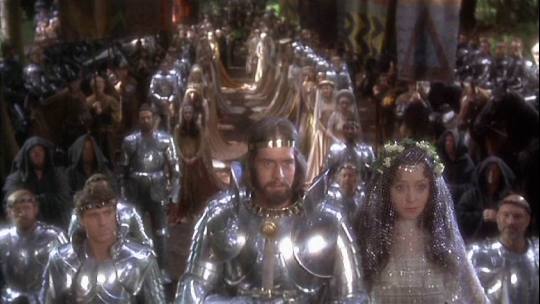
Excalibur is a cautionary tale. The characters are all struggling to find their place in the world, to maintain harmony with nature. Merlin says poignantly of Excalibur to Arthur, “It was forged when the world was young, and bird and beast and flower were one with man, and death was but a dream.” The film is a longing for a golden age, and the struggle to balance the warring natures of honour and goodness with human greed and jealousy. Surely the most rousing image is when Percival has returned the Grail to Arthur who, rejuvenated, also recovers Excalibur from Guinevere (now a nun, to atone for her adultery with Lancelot). She has kept it safe, knowing her once and future king would one day seek its power. Merlin is unfrozen by Arthur, and even Lancelot, a raggedy wild man driven into exile by his own shame, heeds his true king’s call. Arthur rides out with his knights and these fellow warriors through a re-blossoming countryside to do battle with Mordred for the soul of the land, to Carl Orff’s stirring music.
The name of Orff’s piece has Latin roots. 'Carmina' means 'songs', while 'Burana' is the Latinised form of Beuren, the name of the Benedictine monastery of Benediktbeuren in Bavaria. So, Carmina Burana translates as Songs Of Beuren, and refers to a collection of early 13th-century songs and poems that was discovered in Beuren in 1803 - although it has since been established that the collection originated from Seckau Abbey, Austria - and is now housed in the Bavarian State Library. The songs (over 1000 of them) were written in a mix of Latin, German and medieval French by the Goliards, a band of poet-musicians comprising scholars and clerical students, who celebrated with earthy humour the joys of the tavern, nature, love and lust. Although Orff set the original texts, he chose not to use the primitive musical notation that accompanied some of the songs. The collection was first published in Germany in 1847, but it wasn’t until 1934 that Orff came across the texts; a selection had been translated into English and formed part of a publication called Wine, Women And Song. With the help of Michael Hofmann, a law student and Latin scholar, Orff chose 24 songs and set them to music in what he termed a “scenic cantata”.
It was in this form that it was first heard on June 8, 1937, in Frankfurt, under its full title Carmina Burana: Cantiones Profanae Cantoribus Et Choris Cantandae Comitantibus Instrumentis Atque Imaginibus Magicis (Songs Of Beuren: Secular Songs For Singers And Choruses To Be Sung Together With Instruments And Magic Images) Quite a mouthful! After the triumphant premiere of Carmina Burana, Orff, then 41, wrote to his publishers: “Everything I have written to date, and which you have, unfortunately, published, can be destroyed. With Carmina Burana my collected works begin.” However, nothing Orff subsequently wrote ever came close to approaching the popularity of Carmina Burana. Oh dear.
youtube
Richard Wagner’s Siegfried’s Funeral March (from the opera Götterdämmerung) from: Excalibur (1981)
The film almost plays like a screen Opera - it is a heightened reality, a world anew. One where sex, jealousy and pride threaten to undo the mystical balance and ties between the King and the land. A powerful aid to that feeling is the superb score which utilises music such as Siegfried’s Funeral March by Wagner, and O Fortuna, a medieval poem set to music by Carl Orff. Boorman was determined to squeeze as much of the legend into his film’s running time as possible, chopping and condensing characters, and switching acts around. He created a three-act saga - the dark ages and the birth of Arthur, a period of brutality and superstition; the rise of Camelot and its age of reason, law, and dawning of Christianity; and the final descent into chaos and wasteland, where a frail Arthur commands the Round Table knights to seek out the Grail. Arising out of this a final battle commences for the soul of the land and the people, a sense of renewal with a promise of a new age to come. Boorman called it the “past, present and future of humanity.”
Richard Wagner composed his opera Götterdämmerung between 1869 and 1874. It is the last of the four operas that make up Wagner’s Der Ring des Nibelungen cycle, a project that had taken him over 25 years to complete. The opera is much renowned for its orchestral sequences, and these are often performed as concert extracts. Siegfried's Funeral March is taken from Act Three after Siegfried has been murdered by Hagen. Following his murder at the hands of Hagen, the death knell of “Siegfried’s Funeral March” opens with funereal timpani as Siegfried’s body is placed on his shield and carried off by the vassals. The music vacillates from deep mourning and rage-filled outbursts to the majesty of the “Hero” motif, brought out in bold relief at the centre of the movement.The whole opera is made up of musical motives from previous operas that tell of Siegfried's background, including the Volsung theme, Siegmund and Sieglinde's theme, the Sword, Brünnhilde's love theme and the curse of the Ring.
youtube
Richard Wagner’s Ride of the Valkyries (Die Walküre) from: Apocalypse Now (1979)
Francis Ford Coppola's Vietnam War phantasmagoria is an epic fresco oozing with madness. It is a madness that manages to escape from the frame and infect the director and his team, turning the film into a legend. It is impossible not to talk about this film without mentioning the Dantesque shooting of the film. A typhoon that destroyed the sets, a heart attack that nearly killed Martin Sheen, a Brando who was more obese and obtuse than ever, who arrived on the set without knowing his lines, and a director at the end of his rope physically and psychologically, on the verge of divorce and suicide. Instead of taking four months to complete, the shoot lasted 15 months. The analogy with the hell of Vietnam is obvious.
The film itself is about Benjamin Willard, a special forces captain, who is given a highly perilous mission: to find and assassinate Colonel Kurtz, a renegade who has set up his headquarters on the Cambodian border. To accomplish his mission, Willard must travel up a river in a small patrol boat with a handful of men. We follow Willard sinking into the madness and insanity of this war, personified by the character of Colonel Kurtz, an obese Buddhist, a true godfather of the Vietnamese jungle. Apocalypse Now is in fact a mirror for the spectator, it plays on our feelings about the Vietnamese conflict, and this is what sets it apart from other great war films. It is a physical and very real journey through Vietnam, but also an inner journey for its hero, Willard, a drug addict and alcoholic, which will allow Coppola to make his denunciation of the war. After watching this movie over several years I’ve come to regard Coppola’s movie as more than just a war movie but also an hallucinatory trip, as anxiety provoking as possible, about the human soul lost inside itself.
For a movie that had two of my greatest loves - combat helicopters and Wagner - the film surprisingly didn’t inform my future career path as a combat pilot for the British Army. I was too young as a teen and caught up with other feminine things girls of my age did. But watching it retrospectively I’m sure it had some unconscious influence on me. I noticed things more with each viewing such as before Jim Morrison's paradoxical and delightful prologue, it is the helicopter blades that open Apocalypse Now. The jerky noise that spatialises this mortifying horizon is a motif that will be the melodic line of the entire film. In crosshatching, it truncates reality and allows the initial confusion of a man in reverse who opens his eyes on an uncertain world. The fan in the hotel room is not the air-conditioned shelter of war. Everything, from then on, is under the sign of duality.
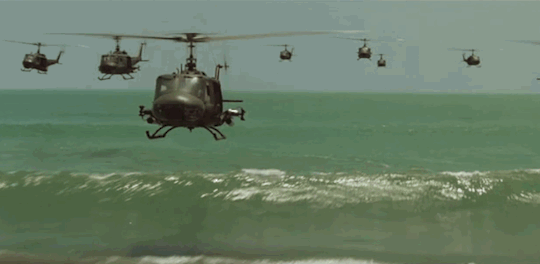
Then of course we have the euphoric scene but no less horrifying than the helicopter attack by Kilgore and his men to lay waste to a village so that they could surf. And all done to the terrifying bombast of Wagner’s Ride of Valkyries. It’s a demented scene but also so visually lyrical. Wagner’s Ride of the Valkyries is sadistically perfect. It’s a perfect mythical metaphor of the valkyries who majestically flew in the sky and decided who died in battle from above. Of course the symbolism of Wagner - wrongly tarred with its fascist connotations - as a place holder for Western imperialism over the Vietnamese is not lost on the viewer. It’s a clever piece of juxtaposition.
Armies have of course used music in warfare for millennia. The deployment of musicians - from trumpeters to drummers - in battle was useful in instilling regimentation and rhythmic purpose for soldiers; and in days before radio, in carrying specific orders across the battlefield. As well as unifying an army - it could potentially disorient the enemy, or as Kilgore eruditely elaborates: ‘We use Wagner, it puts the shits up the slopes. My boys love it!’. So what we are seeing is an age old military tactic being given a modern twist. This has already been established by the notion of an air cavalry, trading their horses for helicopters - which gets further embodied by Kilgore’s wearing of a cowboy hat, common to the Western film genre. The symbolism of linking old and new - ancient and modern, history and the present - occurs throughout Apocalypse Now, as it does in the original novella Heart of Darkness. It indicates an uncomfortable continuum, a never ending foreboding cycle. That beneath the fragile veneer of civilisation, humanity is endlessly repeating barbarism - a cycle foreshadowed by helicopter/fan blades at the start of the film which also loops back to become the end of the film - itself a cycle that won’t end.
When I flew combat helicopters over in Afghanistan we were banned from playing music in our cockpit. It’s simply not practical because you need to be aware of all your aural cues of what the hell is going on around you as every mission is task intensive. You’re focused on a mission where the shit can hit the fan such as coming under rocket attack at any second especially if you’re on a night mission. In theory you could, as anyone with some audio equipment and electronics knowledge could wire in a 3.5mm headphone jack and hook up your music into your own helmet. I knew some pilots who broke the ban and did this. They would get their clever avionic ground staff technician crew to put in a some sort of patch cord that could plug through to their helmet ICS - in return you get them a case of beer. I’m not telling where we got the beer from.
Other honourable mentions:
Second movement of Schumann's Piano Quintet from: Fanny and Alexander (1982)
Gaetano Donizetti’s Lucia di Lammermoor "Il dolce suono" from: The 5th Element (1997)
Rodrigo's Concierto de Aranjuez from: Brassed Off (1996)
Maurice Ravel’s Trio en la mineur pour piano, violon et violoncelle, Sonata for Violin and Cello, Violin Sonata #2 in G, and Berceuse Sur le Nom De Gabriel Fauré from: Un Coeur en Hiver/A Heart in Winter (1992)
Mozart’s Divertimento in D major, K. 136 from: Out of Africa (1985)
Carl Orff - Schulwerk Volume 1: Musica Poëtica - Gassenhauer from Badlands (1973)
Puccini’s O mio babbino caro (aria from the opera Gianni Schicchi) from: A Room with a View (1985)
Verdi’s La forza del destino (the Force of Destiny) overture from: Jean de Florette (1986)
Mozart’s Letter Duet (from The Marriage of Figaro) from : The Shawshank Redemption (1994)
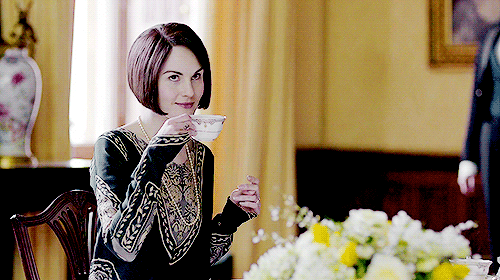
Thanks for your question
#ask#question#music#film#soundtrack#movie#cinema#film soundtrack#composer#classical music#arts#culture#personal
63 notes
·
View notes
Text
youtube
I love Disney Eurobeat Ave Maria. She is the very essence of Camp and my bestfriend. Everyone say hi to her :)
"how did Disney Eurobeat Ave Maria come to be"
> be disney
> produce japan-exclusive eurobeat album
> ave maria is used at the end of the night on bald mountain segment of fantasia
> ave maria is technically a """disney song"""
> Disney Eurobeat Ave Maria
14 notes
·
View notes
Text
To my fellow classic Disney fans…
12 notes
·
View notes
Note
SO was watching some of Ridley Scotts Legend and looked up some behind the scene info,finding out it was heavilly inspired by Grimms Fairy Tales ,the illustrations of Arthur Rakham and Heath Robinson,Jean Cocteaus Beauty and the Beast ,and the Disney classics Snow White and the SEven Dwarfs, Pinocchio and Fantasia .He also stated he wanted to make the story feel like a fairy tale
My question as you are a fan of this stuff :ARe those influences evident and does the film succeed in evoking the feeling of a fairy tale
@thealmightyemprex @autistic-prince-cinderella @themousefromfantasyland @the-blue-fairie @softlytowardthesun @adarkrainbow @sabugabr @princesssarisa @angelixgutz @professorlehnsherr-almashy @amalthea9 @parxsisburning
I am not familiar with the work of Heath Robinson, but as for Arthur Rakham's illustrations, I can see their influence in the design of the fair folk, the water witch and Jack's ragged clothes, in their dark shades of brown, gray, yellow and green that remind of the dark woods.
Snow White and The Seven Dwarfs is a movie that has very simple storytelling anout the fight between good and evil centered in a sweet young princess who gets help of little man from the woods and is presented in an art style reminiscent of european fairy tale illustrations, and that is definitly a similar structure carried on to Legend.
Pinocchio presents a more naive hero who has to go on a dangerous journey to learn how to be less impulsive and more responsable, a journey that Princess Lily goes to echo when she goes into the Dark Underworld to rescue the Unicorn.
From Fantasia there is the character of Chernaborg from the segment Night on Bald Mountain/Ave Maria, whose design and simple motivation of bringing the world into eternal night is definitly an influence on the villain Darkness. Other Fantasia segments to wich Legend shares similarities may be the Nutckracker Suite (with the presence of the Fairies and the passing of the Seasons influenced by the supernatural) and the Pastoral Symphony (that presents a mythological portrayal of life in nature).
Jean Cocteau's Beauty and the Beast is the story of a lady who has to go to a dark place (Belle goes to the Beasts castle, Lily to the Underworld) and interacts with a tall and beastly creature (who wants to marry her) to face her fear of the unknown.
You can see part of the dinamic of Beast and Beauty between Darkness and Lily, only with Darkness being a villanous version of the Beast archetype who can't get redemption.
In Grimm's Fairy Tales, the Devil is a frequent antagonist to be dealt with (usually with cunning). What is interesting is that in the Grimm's Devil Stories, is a male character who gets to directly deal with the treat of the Devil, whereas in Legend, is the female character who goes to face the Devil and ultimately saves the day.
So yes, I can see all those influences adapted and reinvented to create the unique story that Legend was.
12 notes
·
View notes
Text
dont mind me infodumping
actually so cool to see how far animation and filmmaking has come cause when you look at really old vintage film (my fav example being "the dancing pig") you probably think it's lame but also cool because it's crazy how special effects were done back in the day and costumes when now there's usually just computer-made special effects and CGI, Cause back then if you wanted to make a live-action film about lets say, a really advanced robot or super scary villain or monster you'd have specific specially detailed costumes (would the first Godzilla movies count as an example?) , some with mechanics in them when now you can just do it with Cgi. eventually voice recording technology was invented too and we've been building off that ever since. And for animation it's interesting to see it's evolution because we pretty quickly made the jump from black-and-white to technicolor and music was also a huge inspiration when it came to animation, take fantasia for example, a movie made entirely by animating different classical pieces such as night on bald mountain, ave Maria, and theres probably other really good music animations that are lost to time. Classical music had a HUGE influence on animation back then and music still has a large influence on it now with the explosion in use of the internet and YouTube. Uhh hope this made sense
2 notes
·
View notes
Note
(hi its fantastia anon again) im rereading Lost in Translation again and im thinking abt the chaernabog thing again and i want you to know every time you draw a comparison between old trade and latin my brain goes to the ave maria segment of A Night on Bald Mountain. ive been ruined, destroyed,
Poor Fantasia Anon is just

While I'm over here just

14 notes
·
View notes
Text
Top Five Disney Movies Pre-1950
You’d think that a company like Disney would have its humble beginnings but I think that some of their very early films are the best that the company has ever put out. While they're not the newest of movies, these five films really stand the test of time and are still movies that should be watched. All five of these are available to watch on Disney Plus.
5. Fun and Fancy Free (1947):
This film came out in 1947 and it was one of the package films that disney made. Package films were essentially movies with two or three thirty minute shorts. They were made because of funding issues the animation studio had from the effects of the second world war. This movie has two shorts in them, one following a circus bear named Bongo and another one retelling the “Jack and the Beanstalk” tale with Mickey, Donald and Goofy.
The two shorts have some of the best gag and comedy writing out of the package films that came out in the 1940s. While the animation looks cheap in some areas, I think these are really good tales to show to anyone who wants to appreciate the disney at their lowest financially.
4. Snow White and the Seven Dwarves (1937):
It’s no understatement of how important this movie is in general. If it wasn’t for this film, there would be no animated movies in general because no one would believe that 70 plus minute cartoons could be successful like they did when Walt Disney pitched this movie to his friends. It’s the tale of a princess named Snow White who is forced to run away from her kingdom and stay in a cottage with Seven Dwarves as she wishes for a prince to marry her.
While Disney did reinvent the tale to make it more timeless and memorable than the actual original story, there are parts that do feel dragged on. The animation studio had worked on shorts called “Silly Symphonies” before this movie, to train themselves for this movie. A good twenty to thirty minute chunk in the middle of this movie feels like a Silly Symphony segment that doesn’t really push the plot forward. That being said, the characters, the story, and the aesthetic of the movie are aspects that are still memorable to this day.
3. Fantasia (1940):
“Fantasia” is more of an experience than a movie in my opinion. It’s a series of animated segments that correspond with classical musical pieces composed by Leopold Stokowski for the recording of the movie. The movie has seven animated segments with the last one including both musical pieces “Night at Bald Mountain” and “Ave Maria”.
This movie is such a captivating experience as every one of the segments is just gushing with love from the animators. It also brings in new experiences to pieces that are known like how there’s a “Nutcracker” segment with fairies and spring plants coming alive. While not every one of these segments is a favorite of mine, I can name about three that are my favorite shorts that Disney has ever produced.
2. Bambi (1942):
“Bambi” is the tale of a young faun who learns how to grow up and survive in the forest with other creatures around him. It was adapted from the novel “Bambi, A Life in the Woods” by Felix Salten. Many people remember it for not just its likable characters and beautiful animation but also for its G-rated interpretation of the realities of our forests and the wildlife that live in it.
This movie is the one out of the five in this list that hold up the most in not just animation but in themes as well. It’s not trying to be subtle in its messages about forest and wildlife preservation because they were relevant back in 1942 and they still are today. It’s also the one with the most child-like dialogue out of the five here since you are watching a deer grow up. I also believe that this movie paved the way for non-Shakespearean aspects of “The Lion King (1994).”
1. Pinocchio (1940):
This movie was the animation studios follow up to “Snow White and the Seven Dwarves” and it came out the same year as “Fantasia”. That fact just blows my mind considering that both movies are great in my opinion. “Pinocchio” is not only the best Disney movie of this era but it is one of the best animated movies of all time. There's so much charm in big aspects like the characters and little aspects like the environments and settings.
If you can only watch one of the movies on this list or revisit it, this is the one. If you aren’t interested in Disney movies but want some variety of movies for your kids to watch, this is the one that will leave an impact on them. Besides “Bambi”, this is the quintessential coming of age story that people of all ages should watch if they never had the chance to.
4 notes
·
View notes
Text
Find A Song
like a settling of sorts
Plastic Mermaids - Elastic Time
‘Elastic Time’ is an epic, cinematic track - the lush instrumentation steadily swelling to an emotive, and climactic release. It follows on from previous songs ‘Girl Boy Girl’, ‘Disposable Love’ and ‘Something Better’.
Frontperson Douglas Richards “went through some pretty shady places” making the album, but found some inspiration in an unlikely source: “On New Year’s Day I watched Fantasia for the first time since I was a kid” he explains.
“There’s that bit at the end with Mussorgsky’s Night on Bald Mountain where it all goes super dark and scary then this little ball of light appears floating around out of focus and the music changes to the choral Ave Maria, and you’re not sure if you’ve died or not but if this is death it feels really nice and peaceful - the way it went as dark as it could and then let you go, one way or another.
Echoing this, it felt right to put Elastic Time as the album closer. Like a bit of a settling, not sure where, but a settling of sorts. It's like that kind of interstice between awake and asleep or alive and dead, and letting yourself go into the scary feeling, knowing you'll end up somewhere and that'll be ok.”
Added to FAS Spotify playlist dream/psych/shoegaze/ambient.
#music#music blog#indie music#alternative music#dream pop#Plastic Mermaids#Elastic Time#settling#indie#alternative#find a song
1 note
·
View note
Text
kind of want to make some gifs of disney’s fantasia (1940) :3c
#i especially love the animations for the nutcracker suite and night on bald mountain + ave maria#ophelia.txt
17 notes
·
View notes
Text
Fantasia (1940)

In 1937, a meeting between two entertainment titans would have an 80+ year impact on the world. Animation tycoon Walt Disney and conducting maestro Leopold Stokowski met at Chasen’s Restaurant to discuss collaborating on a future project, which would blend the mediums of film, animation and music into a two hour concert feature. In 3 years, the finished project, entitled “Fantasia”, at first startled audiences with its non-traditional and non-linear plot, but as the decades passed by, appreciation would skyrocket, making it a huge success in the box office and setting a record in videotape sales.

“Fantasia” is divided into 8 musical segments with commentary by music journalist Deems Taylor, the third major figure involved behind Disney and Stokowski. No two segments are the same and various artistic and emotional stylings aren’t spared. “Fantasia” delves into the abstract (Toccata And Fugue and The Nutcracker) and the cartoonish (The Sorcerer’s Apprentice), the serene (The Pastoral Symphony and Ave Maria) and the macabre (Night On Bald Mountain) and the comedic (Dance Of The Hours) and the dramatic (Rite Of Spring). With these different themes, the entire two hour running time seems to go with the flow without feeling stale or slow.

“Fantasia” is a personal rarity in my tastes. It was a favorite of mine when I was little, a favorite when I was a teenager and now as an adult, I appreciate it a lot more for its raw beauty. Learning more about the animation process, and watching a segment like “The Nutcracker Suite”, how can you create 24 frames in a second and focus on every leaf and flower that flies in the air? Or the intense action of the broom army in “The Sorcerer’s Apprentice”? Where did all the colors for “The Pastoral Symphony” come from? Then on the technical side, the Multi-plane camera effects of “Ave Maria” and that long final shot that completes the film. “Fantasia” is a non-stop wonderment that always seems to offer something new to marvel at, even if you’ve watched it 100 times like I have. It’s never boring and like a fine wine, gets better with age.
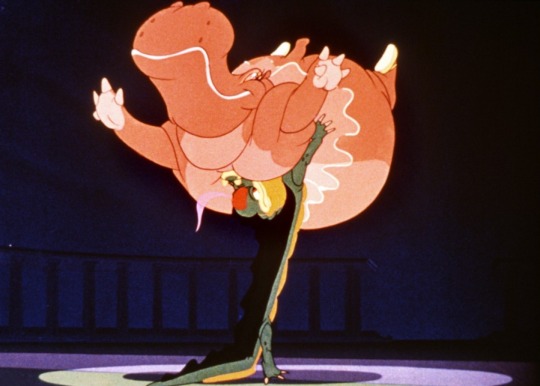
“Fantasia” was seen by music critics as a cheapening of classical music by using them as fodder for cartoons. Audiences were put off by the conventions of animation being pushed to unchartered territories. As someone from the millennial generation, I view “Fantasia” from a completely opposite viewpoint. The music emboldens the animation, going beyond merely an homage, even as so much as redefining the piece’s original theme. For example, Igor Stravinsky wrote the “Rite Of Spring” ballet as a group of tribal dances. The Disney animators transformed it into a history of the Earth’s creation. Beethoven’s “The Pastoral Symphony” was more contemporary in its origin, but fit perfectly with Greek mythology. The problem is that music critics aren’t experts in film or art, and that clouded their judgement in ascertaining the legitimacy of “Fantasia”.

The 1940s also brought similarly packaged films like “Fantasia” at the Disney studios, like “Make Mine Music” and “Melody Time”. While both films have some memorable segments like “Peter and the Wolf” and “Johnny Appleseed” they do not resonate like the 8 segments in “Fantasia”. The future films seemed more generic in musical selection, animation and characters, even down to the movement and flow of the action in response to the musical score. Just like how the funny “Animal House” birthed cheap frat-house pictures, “Fantasia” was the film to take inspiration from, but with less than stellar results. The moral of the story, leave the original alone and don’t try to replicate it in anyway.

The forgetfulness of “Make Mine Music” and “Melody Time” was probably why Disney opted to stop with the musical packages for 50 years and instead focus more on re-releasing “Fantasia” every 10 years. With each subsequent re-release, a whole new audience was introduced to its glory. First it was the hippies in 1969, then the art house crowd in 1982, finally in 1990, it was children that got the best restoration of them all, with clearer images, a remaster both the original Stokowski score and Deems Taylor’s narration track. In 2000, on top of the release of “Fantasia 2000″, the original Roadshow version of “Fantasia” was released with the original unabridged sequences featuring Deems Taylor restored, albeit dubbed by voice actor Corey Burton due to the original soundtrack being lost. No matter what version you see, whether it’s Stokowski’s orchestrations, or the 1982 re-record by Irwin Kostal, or whomever is narrating, “Fantasia” still provides the same experience and impact that never gets tiresome. Disney was at its peak in 1940 and has only ever chartered that high in the early 1990s with the Renaissance era of “Beauty And The Beast” and “Aladdin”. “Fantasia” is one in a million.
10/10
#dannyreviews#walt disney#fantasia#animation#leopold stokowski#deems taylor#toccata and fugue in d minor#the nutcraker#the sorcerer's apprentice#rite of spring#the pastoral symphony#dance of the hours#night on bald mountain#ave maria
26 notes
·
View notes
Photo

Inktober - 31
All Hallows Eve Halloween! I’ve been listening to Night on Bare Mountain all day because that’s the halloween mood and no one can tell me differently. Anyway, when I was little I really loved the Bare Mountain segment of Fantasia it was pretty much the best thing ever, but the Ave Maria segment with all the monks after it really creeped me out.
Take it from me kids, monks are scarier than devils.
#inktober#inktober18#halloween#all hallows eve#night on bare mountain#night on bald mountain#ave maria#classical music#monk#ignis fatuus#will o the wisp#my art#traditional art#also this means I completed inktober#wow#!!!
4 notes
·
View notes